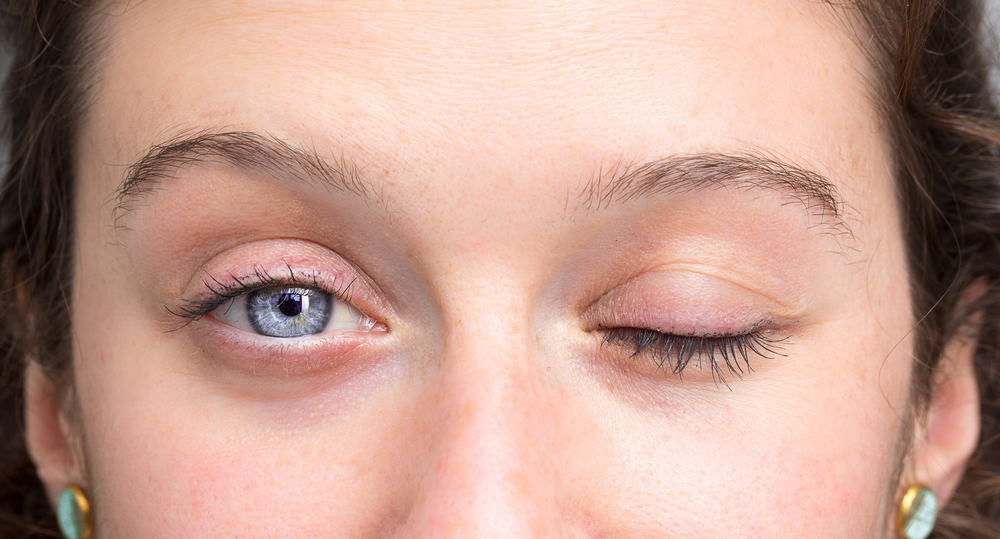- Cutis verticis gyrata (CVG) is a rare medical condition that causes the scalp to take on a wrinkled appearance.
- Proper hygiene can reduce the risk of pruritus (severe itching), secondary infections and an unpleasant scalp odor.
- If treatment of underlying conditions does not resolve the issue, surgery may be the only option to remove these wrinkles.
As we age, detecting wrinkles is no big surprise. However, discovering ridges and deep wrinkles across the top and back of your scalp that resemble the outline of the human brain is an astonishing anomaly.
Cutis verticis gyrata (CVG), also known as bulldog scalp syndrome, can be corrected with surgery. People with this rare syndrome should adhere to a strict daily scalp hygiene program to stave off infection and other potential complications.
Medically contextualizing CVG
The first known case of CVG was documented by French physician, Jean-Louis-Marc Alibert in 1837. He described a patient’s scalp where folds and furrows that resemble the pattern found on the brain formed from thickened skin. Seventy years later the condition Alibert described was termed ‘cutis verticis gyrata’ by the German dermatologist, Paul Gerson Unna.
Boca Raton, FL dermatologist Dr. Jeffrey Fromowitz describes the condition as “a rare medical condition characterized by the thickening of the scalp skin, resulting in the skin folding into prominent peaks and valleys.”
It is typically diagnosed in men more than women, with an estimated prevalence of 1 in 100,000 males compared to 0.026 in 100,000 females. CVG most frequently occurs around puberty, although it often passes unnoticed in its early stage because its slow progression.
There is no cure for CVG. Even with applied pressure, the soft and pliant scalp folds cannot be permanently flattened away. Nor are there any medications that will reduce the size or quantity of these soft, spongy wrinkles. The only option to remove the skin folds permanently involves surgery.
Scalp wrinkles: classifications and causes
The occipital and vertex regions of the head are the primary areas of the scalp affected by CVG. In some cases, the entire scalp is covered with these fleshy peaks and valleys.
Although the color of the skin remains unchanged, hair growth across the affected area may lose it thickness – except in the furrows, where hair growth appears fuller.
Dr. Fromowitz explains that CVG occurs in two variant forms: primary and secondary.
“The primary (essential) form has no other associated abnormalities and its causes are unknown. The secondary form can be associated with underlying disorders and other connective tissue conditions.”
Primary CVG
The primary variant of CVG is further divided into two types: essential and non-essential CVG. The cause of primary essential CVG remains undetermined, but endocrinological and genetic connections are believed to influence the development of the condition.
Primary non-essential CVG is associated with neurological disorders, such as epilepsy and schizophrenia. Additional symptoms may include deafness, strabismus (abnormal alignment of the eyes), retinitis pigmentosa (inflammation of the eye), microcephaly (abnormally small head and incomplete brain development) and blindness.
Secondary CVG
Secondary CVG occurs as a consequence of a number of different conditions, such as dermatoses, nevi (a birthmark or mole that takes the shape of a red raised patch), acromegaly (abnormal growth of hands or feet triggered by excess growth hormone production by the pituitary gland) and myxoedema (swelling of the skin that results in a waxy skin consistency).
Other secondary associations include inflammatory conditions, such as psoriasis, eczema, Darier disease (a disorder characterized by dark, crusty patches on the skin), impetigo (a common and contagious skin infection that causes red sores), acne and atopic dermatitis.
Human growth hormone and anabolic steroid use are also linked to secondary CVG.
Disease management
Before any form of treatment is considered, a definitive diagnosis must be established. In cases of primary non-essential and secondary CVG, a computed tomography (CT) scan and/or a magnetic resonance imaging (MRI) scan can be used to detect structural brain abnormalities (e.g. atrophy) as well as any ophthalmologic and neurologic abnormalities.
Primary essential CVG has no secondary causes. Except for surgical options to remove the skin folds, there is no other treatment available. For primary non-essential and secondary CVG, there can be a wide variety of associated underlying disorders or diseases.
In the case of non-essential primary CVG, treatment focuses on managing the neurological, cranial, psychological and or ocular disorders that may be behind the syndrome.
Similarly, treatment for secondary CVG aims at rooting out and managing the underlying disease, such as diabetes, myxedema impetigo, acne and atopic dermatitis. Notably, one secondary cause of CVG, cerebriform intradermal/melanocytic nevus, has the potential to degenerate into malignant melanoma. As such, removal of the CVG lesions is required.
Scalp hygiene
Embracing a daily scalp hygiene program can reduce the accumulation of debris and secretions in the creases of the skin, which can result in pruritus (severe itching), secondary infections and scalp odor.
Applying a potent antioxidant such as a vitamin E moisturizer helps prevent the formation of new creases, while limiting CVG-related hair loss.
A potent anti-itch shampoo like Neutrogena T-Gel with 2% concentrated coal tar is an excellent option to relieve severe itching caused by CVG.
Scalp wrinkle surgery
Although CVG is a disfiguring condition, the scalp condition itself is benign. However, Beverly Hills plastic surgeon Dr. Jay Calvert notes that scalp wrinkles are often regarded as troubling from an aesthetic point of view.
“There can be psychological stress and physical image issues for those who are stricken with this condition,” he notes.
Both Dr. Calvert and Miami plastic surgeon Dr. Jacob Freiman concur that surgery is the most viable option to remove these wrinkles.
Dr. Frieman insists that “the best treatment for cutis verticis gyrata is treating the folds as if they are indented scars and removing them. It is possible to try to inject temporary fillers or fat into the area, but excision is still the standard of care.”
Scalp reduction, subcision and more
The most common surgical procedure to remove CVG wrinkles is scalp reduction. However, this type of surgery has a higher rate of success when the location of the CVG rolls are limited to the back of a patient’s scalp.
Regrettably, for cases of CVG that cover the entire scalp, the scarring that can result from the surgery itself makes it prohibitive.
Fortunately, there is an innovative approach that enables greater corrective potential when dealing with CVG that covers significantly larger areas of the scalp. This process involves a subcision to release the creases combined with dermal fillers to create a scarless result and smoother finish.
Other treatment possibilities include tissue expansion, skin grafts, and a resurfacing procedure that removes layers of skin with a laser.
Ironing out a good plan of action
Unfortunately, there is currently no cure for CVG itself. If treating an underlying condition that may be causing the syndrome does not resolve the issue, the only option for removing the scalp wrinkles is surgery.
If you suspect that you have CVG, make an appointment with a dermatologist. Depending on your diagnosis and the size and location of the scalp folds, your doctor can help determine the best course of action to manage your condition.
» Need professional skin care advice? Meet our medical review team.









